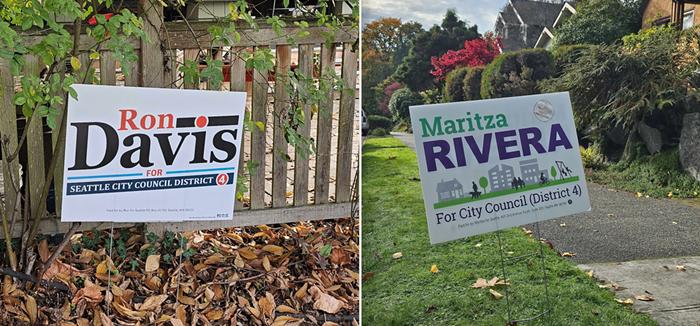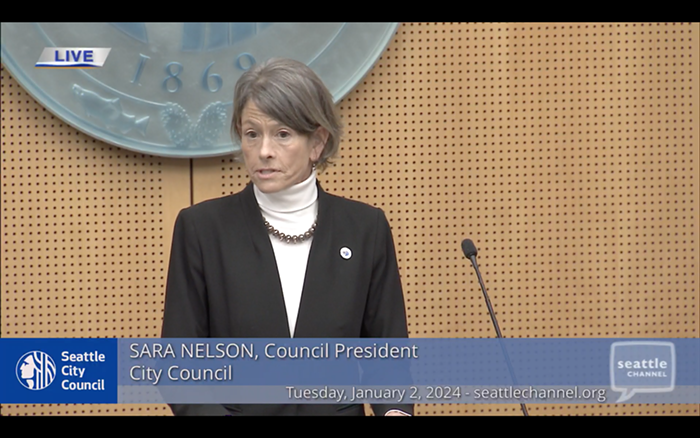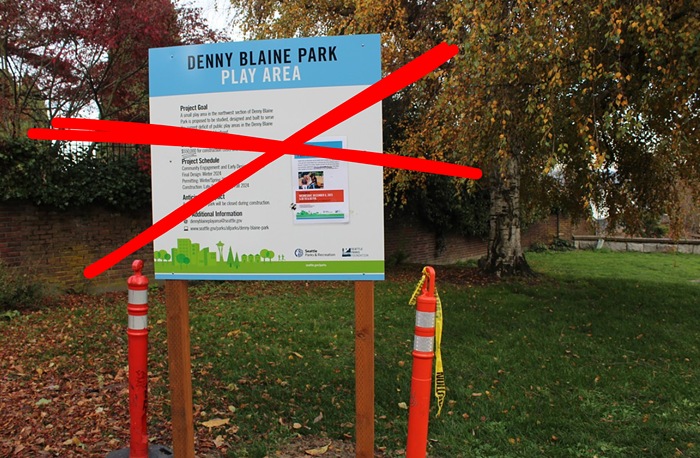
- Alex Garland
- Sunday's climate change march in New York City was the "largest climate action ever," according to organizers.
Yesterday, an estimated 400,000 people marched in New York City, as did countless others in hundreds of cities around the world (including Seattle), as part of the People’s Climate March. Tomorrow, the UN will host the 2014 Climate Summit, a diplomatic speechfest that’s intended as a warm-up to binding international climate negotiations next year. From the bottom, and from the top, it’s a lot of representation in response to an urgent challenge.
Yet mainstream media largely ignored the march or buried coverage of it. As Politico reports, "It wasn’t making an immediate splash on national TV — 'Meet the Press' didn’t mention the march, while CNN, Fox, and MSNBC were focusing on issues like the NFL, the fight against ISIL, Friday’s White House intruder, and the November elections."
Where the networks didn’t ignore the march, they seemed to rejoice in photo reels and subtly dismissive language, portraying the marchers as a starry-eyed mass of idealists at odds with the concerns of ordinary Americans (and they’re blocking traffic, damn it!). Meanwhile, tomorrow’s summit attendees are already being portrayed as yet another international hobnobbery of bureaucrats long on speeches and short on meaningful action.
Big Media tells most of its climate stories—and asks questions of leaders within the climate movement—according to this fruitless, click-baity, and frankly shortsighted dichotomy: impractical idealists vs. corrupt and hypocritical leaders. Though some major outlets have given serious positive coverage to the climate change march, the rule still generally holds: If you express some modicum of concern for, you know, a habitable planet, you thereby disqualify yourself as a political realist.
What you’re not getting from enough media sources is the nuanced picture of the climate movement that we’ll need in order to really imagine a future beyond today’s normal, beyond that story that big energy companies have nursed in us for decades. Namely, that they are the lifeblood of our economy and that failing to burn every last barrel of oil and ton of coal threatens jobs lost and families hurting and energy insecurity and national economic decline. Sound familiar?
That’s not to say that fossil fuels didn’t help to build a thriving American economy. They did. Thanks, guys. But we’re ready to move on… and they’re not. They can’t. This is literally existential for them, and now that we’re pulling back the curtain on their Oz, they’re holding all the faster to that classic lifeblood-and-threat narrative. Mainstream media, when they’re not helping to megaphone those talking points, are indirectly propping it up with that deflating dichotomy, idealist vs. cynic. Whomp: double-lose.
Want to imagine a different future closer to home? Here in Washington, we have the country’s greenest governor, in a generally blue state, taking serious steps to join us to our neighbors’ (BC and CA) carbon pricing systems. That would mean hundreds of millions, even billions of dollars in state revenue to, I don’t know, adequately fund our K-12 education system? Give tax breaks to working families? Invest in climate resilience and clean energy projects? Yes, please.
And in case you haven’t noticed, we also have an incredibly well-organized community of activists ticking off one success after another against schemes that want to turn the Pacific Northwest—the Pacific Northwest!—into a shipping gateway for massive quantities of coal and oil to Asian markets. They are a powerful, diverse, and growing network: tribal and faith leaders, students, businesses, health-care providers, firefighters, mayors, longshoremen, singing grandmas (yes, really), and others.
And, of course, we’ve got hundreds of thousands of residents across the region taking actions large and small in their lives every day: biking, busing, or carpooling to work, reducing their trash and recyclables, installing solar panels on their homes, eating less-animal-based diets, choosing smaller-footprint homes, or just buying less stuff (I for one am a card-carrying frugal/recession-scarred millennial). These and other actions not only collectively reduce our impact on our environment; they also, and more importantly in my view, help to cultivate a new and less carbon-based normal—and it doesn’t look too shabby, right?
We’re going to need that diversity of voices to drown out the tired mainstream media narrative, and to imagine up a broad array of alternatives. And we’ll need those voices doing this in a variety of ways, be that journeying a totem pole through the Northwest, digging deep into policy wonk like us Sightliners or the folks at Climate Solutions, activating powerful constituent groups like Cool Moms or Puget Sound Sage or Washington Conservation Voters, or simply (well, not simply at all) coming up with other creative ways to move people to desire something different out of tomorrow.
Washington State is poised to help inaugurate a sea change in our climate narrative. When leaders here express hope that we will move beyond free carbon dumping, for instance, they are not being pie-in-the-sky dreamers. They are seeing—and helping others to see, as are yesterday’s marchers and tomorrow’s summit attendees—the future whose groundwork we are laying now. They are defying both Big Energy’s threats and the tired idealist/cynic binary.
The climate movement is a slow build of a new story, but it is happening. It is practical in its idealism. It is anything but cynical.
Serena Larkin is a communications associate at the Sightline Institute.

















